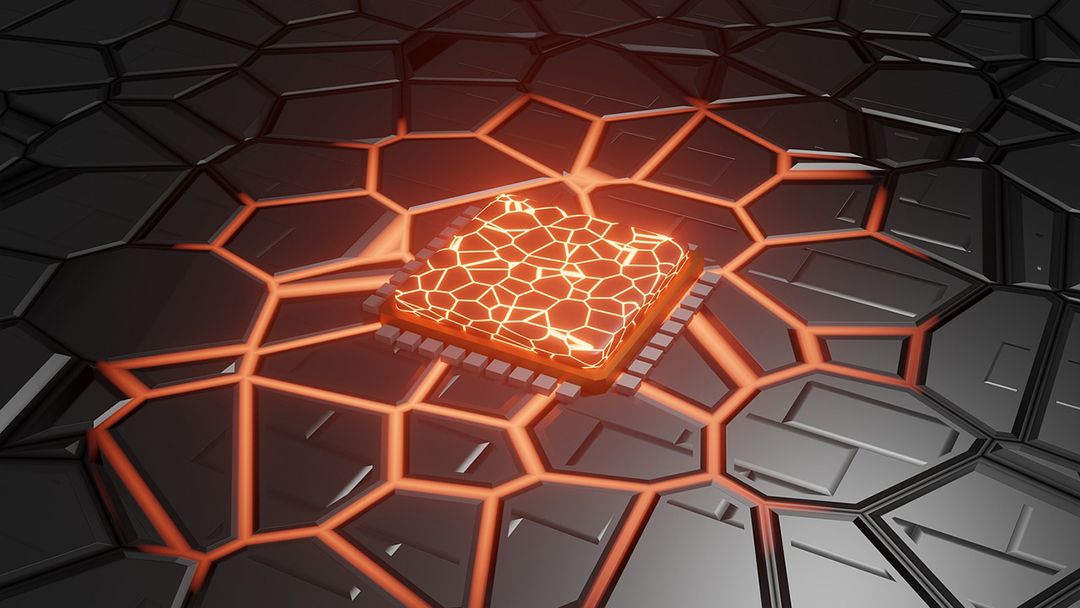Tackling heat transfer, diamond layers help build 3D circuits with lower power consumption, faster signaling, and increased performance.
Scientists have discovered that adding diamond layers to computer chips significantly boosts heat transfer, paving the way for faster, more powerful computers.
Their research revealed that this combination improves heat transfer by tenfold, a feat that could lead to more efficient designs like 3D circuits, where electronic components are stacked vertically, and heterogeneous integration, which combines different types of components in a single chip.
“These technologies offer significant advantages over traditional approaches,” said Mohamadali Malakoutian, a postdoctoral researcher at Stanford University and one of the lead authors of the study, in an email. “3D integrated circuits, which stack multiple chips into a single device, and heterogeneous integration, which integrates different material-based components into a higher-level assembly, both provide lower power consumption, faster signal transitions and increased performance.
“These technologies are shaping the future of semiconductor devices, providing solutions to overcome the physical, technological, and economic limits of planar integrated circuits.”
Expanding into the third dimension
Conventional, flat computer chip designs have been incredibly successful, driving exponential growth in computing performance over the past decades. However, this technology is nearing its physical limits.
Transistors, electrical components that act like a switch or amplifier in an electronic circuit, are fundamental to this process. As they reach atomic scales, further miniaturization becomes more challenging, forcing scientists to rethink how chips are designed and manufactured.
One alternative, says Srabanti Chowdhury, a professor of physics at Stanford University and another author of the study, is instead of developing tinier chips, they could be integrated into 3D structures, which can pack tens times more chips into the same computer board compared to a two-dimensional design. However, this approach has significant drawbacks due to an excess of heat that builds up in the crowded structure.
“Dense chips experience a significant drop in efficiency due to self-heating of [their] components, primarily transistors,” said Malakoutian. “[Computers then] suffer from premature failure caused by local hotspots, negatively impacting performance and longevity. This issue is exacerbated in 3D integrated circuits […] due to their stacked design. The increased power dissipation and high device densities in three-dimensional designs lead to elevated temperatures, affecting both performance and reliability.”
These problems, which don’t exist for regular 2D processor designs, have prompted researchers to look for radically new ways to cool down computing chips.
Diamonds tackle heat transfer
To combat this problem with 3D computer chips overheating, researchers have developed processor designs where a chip’s computing layers are interspersed with diamond layers, connected by additional diamond “vias” that run through all layers of the chip and end in a heatsink that dissipates the heat.
Heat inside a chip is transferred by vibrations of its constituent materials, which on the microscopic scale can be thought of as particles known as phonons — much like light on the subatomic level is a collection of particles called photons.
However, the properties of phonons in silicon — the semiconductor that chips are typically made of — are very different from those of diamond. Consequently, the boundary between them poses a hard barrier for phonons to pass through, scattering them or even reflecting them back into the chip.
“While the diamond has high thermal conductivity, another critical parameter is the thermal boundary resistance between the diamond and the device’s [computing] material,” said the authors in their paper. “There are many interfaces between silicon and diamond. If a high thermal boundary resistance exists at these interfaces, it becomes a bottleneck for transporting heat away from the device active region. Thus, engineering a low thermal boundary resistance between the heat spreader and the device is needed to cool down the [chip] effectively.”
A much needed “interlayer”
Chowdhury says that the team had previously accidentally discovered that adding a layer that is silicon-based between the diamond and the chip significantly reduces thermal boundary resistance.
“We conducted a systematic study of the interlayer and used molecular dynamics simulations, performed by our collaborators at UT Dallas, to understand the underlying physics,” explained Chowdhury. “We discovered that engineering nanometer-thick silicon carbide interlayers can remarkably improve the heat transfer because these interlayers act as bridges, facilitating phonon transfer from the silicon [chip] to the diamond heat spreader.”
The team showed that there is an optimal interlayer thickness of 2–7 nanometers, at which resistance to heat transfer is minimal. At this thickness, heat transfer is greatly facilitated by interlayer phonon tunneling — a quantum phenomenon where a particle overcomes a classically difficult or insurmountable barrier.
This extensive analysis confirmed the team’s earlier observations about the properties of silicon interlayers and allowed them to be explained in terms of microscopic phonon dynamics–an important step toward creating a working 3D processor.
What will it take to build working 3D computer chips
The findings of this study are crucial for better understanding the physical properties of phonons. The team hope their findings will contribute to real-world development in the coming years.
“The use of thin interlayers of silicon carbide as thermal bridges opens up new possibilities for enhancing thermal management in compact and densely packed electronic systems,” concluded Chowdhury.
“We anticipate that these innovations could be integrated into commercial semiconductor manufacturing processes within the next three to five years. This timeline accounts for the necessary stages of further research, development, and testing, as well as collaboration with industry partners to scale up production and implement these thermal management solutions in practical applications.
“Moreover, we plan to extend our thermal management solutions to benefit emerging technologies such as 5G and 6G devices, aiming to enhance their performance, reliability, and energy efficiency.”
Reference: Mohamadali Malakoutian et al, Lossless Phonon Transition through GaN-Diamond and Si-Diamond Interfaces, Advanced Electronic Materials (2024). DOI: aelm.202400146
Feature image credit: TonyMelony on Pixabay












+ There are no comments
Add yours